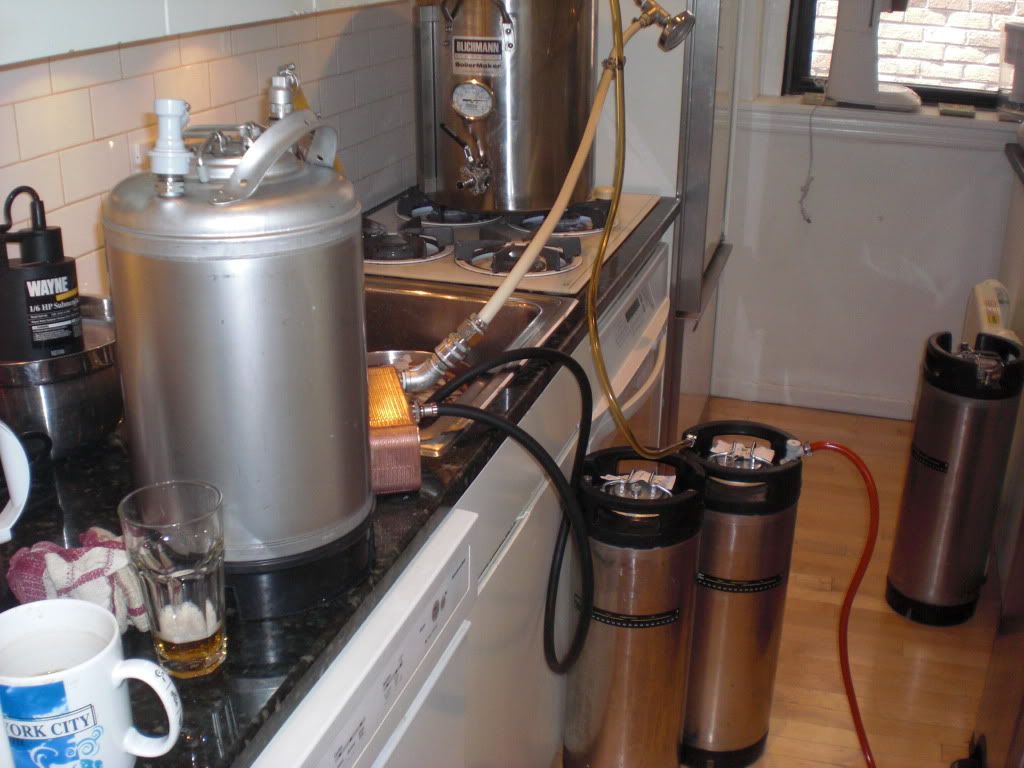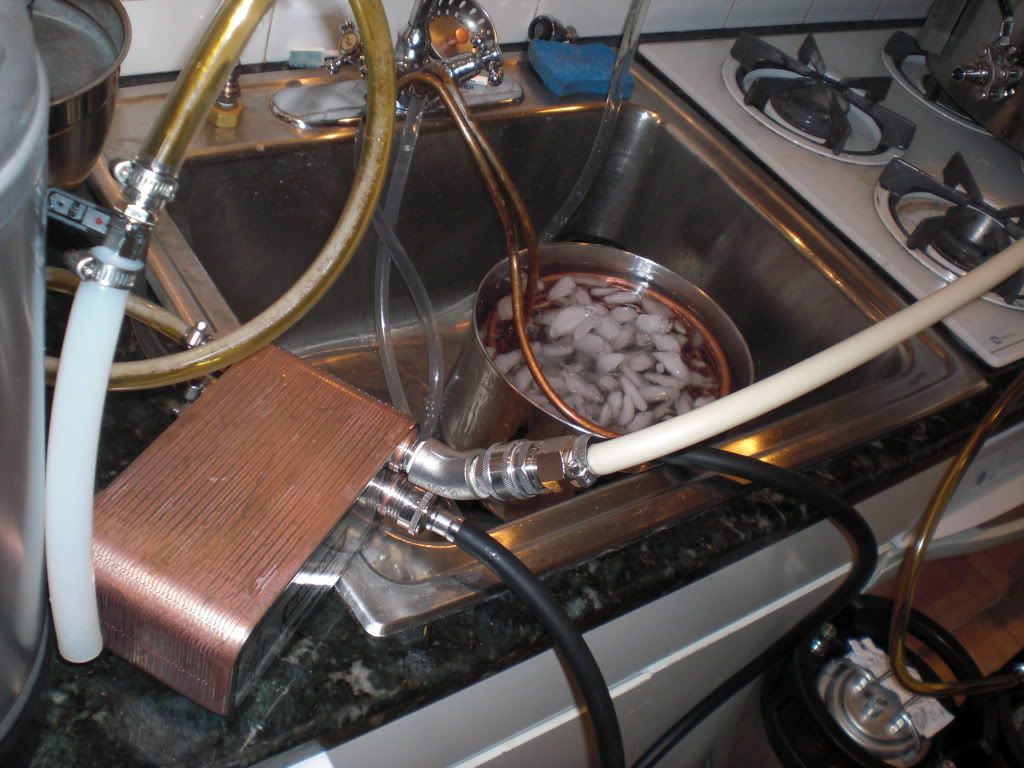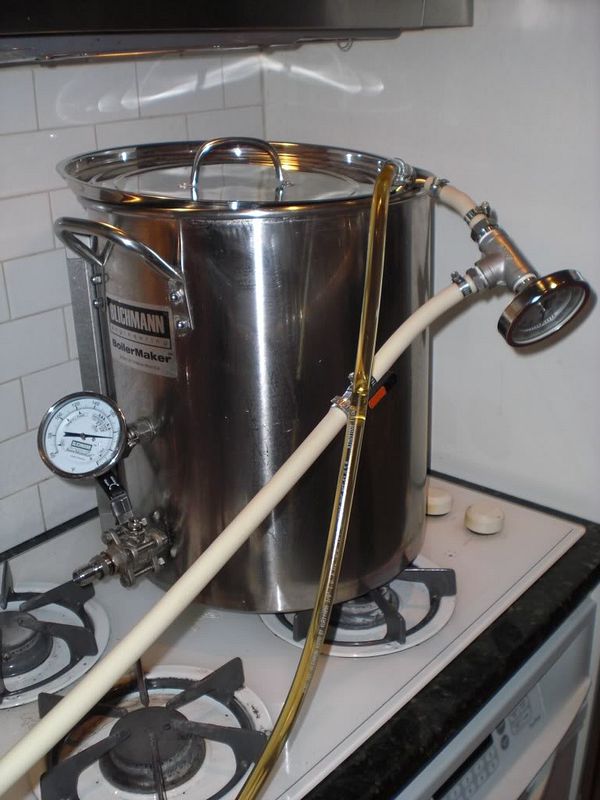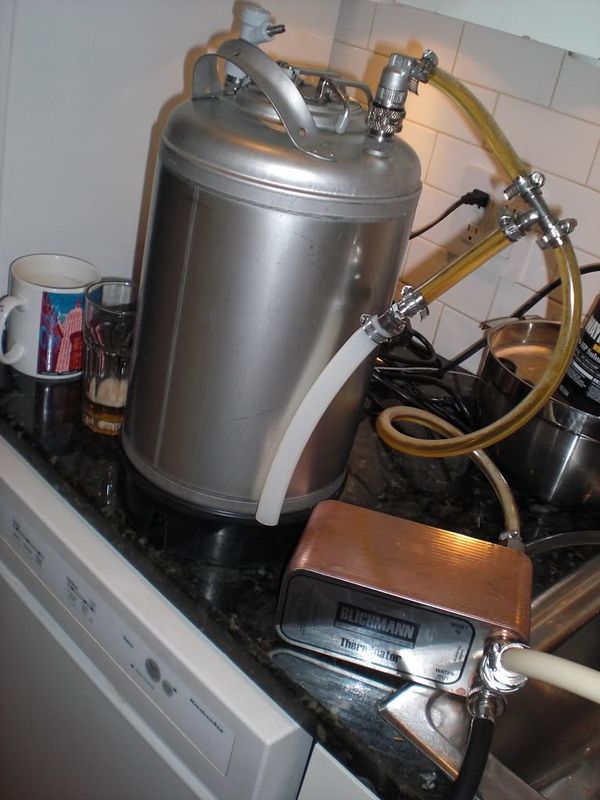I want to see what effect pasteurization truly has on beer, as well as how it will effect shelf life.
Here's what I intend to do:
- Take a lager that has been fully fermented in a corny keg and attach one end of thermoplastic tubing to the out post. The tubing will be coiled in a bucket ala an immersion chiller (I'm using @ 12' of tubing). The end of this tubing will get attached to the out post of another receiving keg. (Dang, just realized I'll need a stainless steel ball lock disconnect for the receiving keg...)
- I'll fill the bucket with boiling water, then push the beer from one keg to the other with low psi to make sure the beer gets heated hopefully in the neighborhood of 160 - 170 degrees while traveling thru the tubing.
- The second keg will be sitting in an ice bath and that will be replenished with ice as necessary to aid in cooling the pasteurized beer quickly.
- Once half the keg is thru, I'll stop the flow and immediately put the newly filled keg into the freezer.
- The remaining half left in the original keg that was not pasteurized will be filtered and bottled the usual way I do...
Should be a cool comparison. Any thoughts on my process?
Here's what I intend to do:
- Take a lager that has been fully fermented in a corny keg and attach one end of thermoplastic tubing to the out post. The tubing will be coiled in a bucket ala an immersion chiller (I'm using @ 12' of tubing). The end of this tubing will get attached to the out post of another receiving keg. (Dang, just realized I'll need a stainless steel ball lock disconnect for the receiving keg...)
- I'll fill the bucket with boiling water, then push the beer from one keg to the other with low psi to make sure the beer gets heated hopefully in the neighborhood of 160 - 170 degrees while traveling thru the tubing.
- The second keg will be sitting in an ice bath and that will be replenished with ice as necessary to aid in cooling the pasteurized beer quickly.
- Once half the keg is thru, I'll stop the flow and immediately put the newly filled keg into the freezer.
- The remaining half left in the original keg that was not pasteurized will be filtered and bottled the usual way I do...
Should be a cool comparison. Any thoughts on my process?






